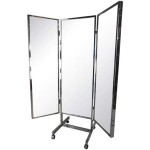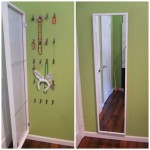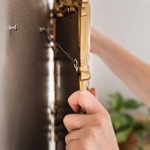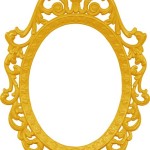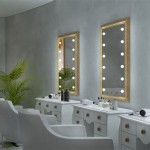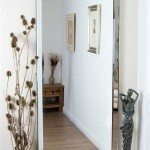Adding a Frame Around Your Bathroom Mirror: A Comprehensive Guide
The bathroom mirror, often a functional necessity, can be elevated to a design element with the addition of a frame. Framing a bathroom mirror provides an opportunity to enhance the aesthetic appeal of the entire bathroom, injecting personality and complementing existing décor. This article explores the benefits of adding a frame, the various framing options available, and the necessary steps for a successful installation.
Enhancing Aesthetic Appeal and Functionality
Framing a mirror goes beyond mere decoration; it significantly impacts the overall perception of the bathroom space. A framed mirror can transform a simple, builder-grade mirror into a focal point, drawing the eye and adding visual interest. The choice of frame material, color, and style can be tailored to match or contrast the existing bathroom fixtures, tiles, and paint colors, creating a cohesive and harmonious design. Furthermore, a frame can subtly define the mirror's boundaries, making it appear more substantial and preventing it from visually disappearing into the surrounding wall.
Beyond aesthetics, a frame can indirectly enhance the functionality of the mirror. By providing a visual anchor, it helps to orient the user and contributes to a more deliberate and focused grooming experience. A well-chosen frame can also offer a practical benefit by concealing any imperfections or chipped edges on the existing mirror, extending its lifespan and preventing the need for immediate replacement.
The perceived value of the bathroom is also increased by the presence of a framed mirror. Potential home buyers often appreciate the attention to detail and the upgrade from a typically plain mirror to a more sophisticated and personalized design element. This upgrade can be a relatively inexpensive way to increase the marketability of a home.
Exploring Framing Options: Materials, Styles, and Considerations
The options for framing a bathroom mirror are vast and varied, allowing for customization to suit any design preference and budget. Selecting the right frame involves considering factors such as the overall bathroom style, the size and shape of the mirror, the level of humidity in the bathroom, and the desired level of durability.
Materials:
The choice of material is crucial, influencing both the aesthetic and the longevity of the frame. Popular options include: *Wood:
Wood frames offer a classic and versatile look. They can be painted, stained, or left natural, allowing for seamless integration with various design styles. However, wood is susceptible to moisture damage, so it's essential to choose a water-resistant wood like cedar or teak, or to apply a protective sealant. *Metal:
Metal frames provide a sleek and contemporary aesthetic. Options include stainless steel, brushed nickel, and oil-rubbed bronze, each offering a distinct look. Metal frames are generally durable and resistant to moisture, making them a suitable choice for bathrooms. *Polyurethane:
Polyurethane frames are a synthetic alternative to wood. They are lightweight, moisture-resistant, and paintable, making them a practical and cost-effective option. Polyurethane frames can mimic the look of wood while offering superior durability in humid environments. *Tile:
Tile frames create a seamless and integrated look, especially when using the same tiles as those on the bathroom walls or backsplash. Tile frames are highly durable and moisture-resistant, making them an ideal choice for bathrooms. *Mirror:
Using strips of mirror to frame a central mirror creates a unique and visually appealing effect, amplifying light and enhancing the sense of space within the bathroom.Styles:
The style of the frame should complement the overall bathroom design. Common styles include: *Traditional:
Traditional frames often feature ornate details, such as carvings, moldings, and decorative finishes. They are well-suited for bathrooms with a classic or Victorian-inspired design. *Modern:
Modern frames are characterized by clean lines, minimalist designs, and simple finishes. They are ideal for bathrooms with a contemporary or minimalist aesthetic. *Rustic:
Rustic frames incorporate natural materials, such as reclaimed wood or distressed metal, and often feature a weathered or aged appearance. They are suitable for bathrooms with a farmhouse or industrial-inspired design. *Coastal:
Coastal frames often feature light colors, natural textures, and nautical-inspired details, such as rope accents or seashell embellishments. They are perfect for bathrooms with a beachy or coastal theme.Considerations:
When selecting a frame, it is essential to consider the following: *Mirror Size and Shape:
The frame should be proportional to the size of the mirror. A frame that is too large or too small can look disproportionate and detract from the overall aesthetic. Consider the shape of the mirror and choose a frame that complements its contours. *Bathroom Size and Lighting:
In smaller bathrooms, a lighter-colored frame can help to brighten the space and create a sense of openness. In larger bathrooms, a darker-colored frame can add depth and visual interest. Consider the existing lighting in the bathroom and choose a frame that doesn't cast unwanted shadows. *Moisture Resistance:
Given the humid environment of a bathroom, choose a frame material that is resistant to moisture damage. This is particularly important for wooden frames, which should be properly sealed and protected. *Installation Method:
Determine the most appropriate installation method based on the type of frame and the construction of the bathroom wall. Options include adhesive, screws, and brackets.Step-by-Step Guide to Framing a Bathroom Mirror
Framing a bathroom mirror can be a relatively straightforward DIY project, but it requires careful planning, precise measurements, and the right tools and materials. The following steps provide a detailed guide to ensure a successful installation.
1. Planning and Preparation:
Measure the Mirror:
Accurately measure the dimensions of the mirror, including the height, width, and thickness. These measurements will be used to determine the size of the frame.Choose a Frame:
Select a frame that complements the existing bathroom décor and meets your aesthetic preferences. Consider the material, style, and dimensions of the frame.Gather Tools and Materials:
Assemble the necessary tools and materials, including: * Frame * Measuring tape * Pencil * Miter saw (or hand saw and miter box) * Wood glue (or appropriate adhesive for the frame material) * Clamps * Sandpaper (if required) * Paint or stain (if desired) * Safety glasses * Gloves * Level * Construction adhesive (mirror mastic) * Caulk * Caulk gunPrepare the Work Area:
Protect the surrounding surfaces with drop cloths or plastic sheeting. Ensure adequate ventilation in the work area.
2. Cutting and Assembling the Frame:
Cut the Frame Pieces:
Using a miter saw (or hand saw and miter box), cut the frame pieces to the correct length and angle. For a rectangular or square mirror, cut four pieces with 45-degree angles at each end. Ensure the inside dimensions of the frame match exactly with the outside dimensions of the mirror.Assemble the Frame:
Apply wood glue (or appropriate adhesive) to the mitered corners of the frame pieces. Carefully align the pieces and clamp them together securely. Allow the glue to dry completely according to the manufacturer's instructions.Sand and Finish the Frame:
Once the glue is dry, sand the frame smooth with sandpaper. If desired, paint or stain the frame to match the bathroom décor. Apply multiple coats of paint or stain, allowing each coat to dry completely before applying the next.
3. Attaching the Frame to the Mirror:
Clean the Mirror:
Thoroughly clean the surface of the mirror to remove any dirt, dust, or grease. This will ensure a strong bond between the mirror and the frame.Apply Adhesive:
Apply a bead of mirror mastic (construction adhesive specifically designed for mirrors) to the back of the frame, along the edges that will come into contact with the mirror. Avoid applying too much adhesive, as it can ooze out from the edges.Position the Frame:
Carefully position the frame around the mirror, ensuring it is centered and aligned correctly. Press the frame firmly against the mirror to create a strong bond.Secure the Frame (Optional):
For added security, use clamps or masking tape to hold the frame in place while the adhesive dries. Follow the manufacturer's instructions for the adhesive drying time.Caulk the Edges:
Once the adhesive is dry, apply a bead of caulk around the perimeter of the frame, where it meets the mirror. This will seal the gap and prevent moisture from seeping in. Smooth the caulk with a wet finger or a caulk smoothing tool.
4. Final Touches:
Clean Up:
Remove any excess adhesive or caulk with a damp cloth. Clean the mirror to remove any smudges or fingerprints.Inspect the Frame:
Carefully inspect the frame to ensure it is securely attached to the mirror and that there are no gaps or imperfections.
By following these steps and taking the time to plan and execute the project carefully, any homeowner can add a frame to their bathroom mirror, transforming it into a stylish and functional design element.

How To Frame Out That Builder Basic Bathroom Mirror For 20 Or Less

Easy Diy Tutorial Adding Trim Around A Giant Mirror For Ers

Mirror Frame Diy How To Update A Basic Bathroom Our Faux Farmhouse

Diy Stick On Mirror Frame Sawdust Sisters

Mirror Frame Diy How To Update A Basic Bathroom Our Faux Farmhouse

How To Frame A Mirror

The Kids Bathroom Mirror Gets Framed House Of Hepworths

Diy Bathroom Mirror Frame Without Removing Clips Her Happy Home

How To Frame A Mirror Sand And Sisal

How To Add A Frame Your Bathroom Mirror
